INFERNO
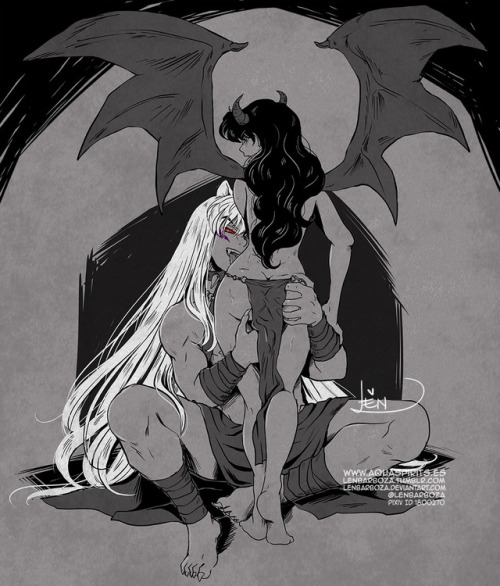
INFERNO
I really like this InuKag demon version from my Halloween piece. ^^
More Posts from 5rzefona and Others


“In 2020, feminism is as simple as buying the right products. It requires no thought, no critical analysis, and no changing any other behavior of your own. When everyone is a feminist, no one is. And the fallacy of empowerment basically stuck a whole generation of women with the idea that being hot is the same thing as being powerful, without realizing that if your power goes away as soon as men don’t want to fuck you anymore, it was never yours to begin with.”
- @kendallroy, this post

Lovely, sun-filled room is perfect for plants. (The lucky lady who lives here says, “ Y’all… I am never going to get over how privileged I am to be living in this room.”)
via instagram
Sesshomaru

Bitch when I tell you he was my first anime daddy 😍😍
Like I don’t think y’all understand what I mean

Sesshomaru knew he couldn’t be fucked with when it came to showing up and out
I mean look at how his ass leaves a scene
He just screams bad bitch and big dick energy

And while we’re on the subject can we please admire that fucking custom made chinchilla fur bitch
I just know that shit was soft and warm asf
And no matter the fight that bitch never got a speck of dirt on it
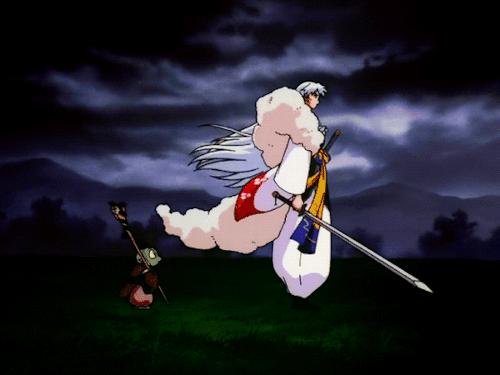
I didn’t give not a fuck that he didn’t like humans either I was still happy asf to see him show up
He made an exception for Rin’s ass so why not me
Every time he came through I knew a fight was bout to break out
That’s because his mouth too slick and Inuyasha was always ready to run somebody they fade

Do y’all see that fucking smirk
This nigga knows Inuyasha not on his level yet

In conclusion I will bust it wide the fuck open for Sesshomaru anytime anyplace and not give one fuck about it
I might start doing these for different characters I don’t know yet, but if you liked this one let ya girl know
When your the lead heroine in a classic literature novel and someone proposes to you:

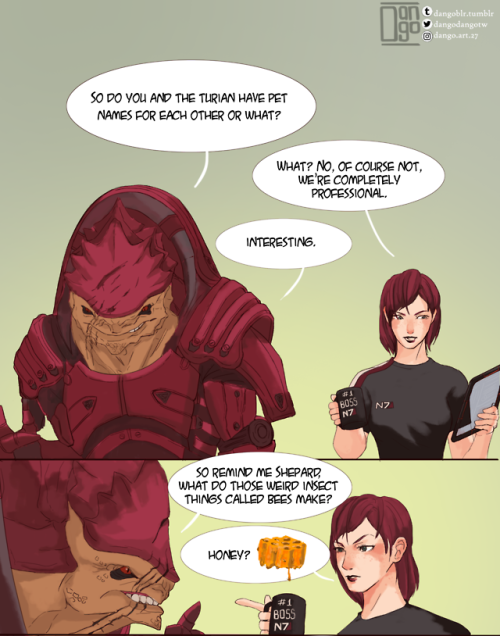
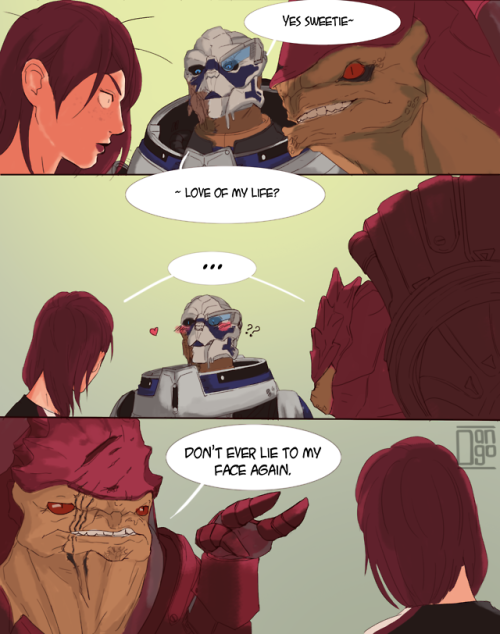
Thank @garrus for suggest this cute story. I finally draw it ! Short comic based on this post I’m wondering what thought Shep has in her mind right now.
“Nevertheless, although the way the Bathhouse is staged recalls a megalopolis, Miyazaki did not choose to show it from a futuristic angle, in contrast to Tezuka Osamu. The references are more ninetheenth and early twentieth century: the forge, the apothecary’s cabinets, the tatami room, the tasuki sashes, the old-fashioned elevators, the curtains and wall hangings in the old woman’s apartments, as well as her hairstyle, and so on. It is the world of bourgeois order. The old woman’s face, her Victorian bun, and the way her rooms are decorated all suggest it - at the very top of this closed and vertical universe lives an Anglo-Saxon-looking witch. However, neither the Japanese people nor Japanese culture (starting with the public-bath tradition) are entirely remote from this world. In fact, they are completely taken with it and are confirmed stakeholders in it; one of the more obvious reminders of this is that the outside of the Bathhouse clearly brings Sino-Japanese architecture to mind. But it is not an ancient architecture recalling a specific style. It is a hybrid building, almost a pastiche; it is made not of wood but of conrete painted and decorated in the 1930s style known as Imperal Crown, like the Tokyo National Museum. Miyazaki thus evokes the Rokumeikan palace, built in 1883 by the Japanese government to welcome Westerners, and the salons of Gajoen and Meguro, popular spots for bourgeois weddings.”


“[…] Even though allusions to the West are the most pronounced, it is interesting to note that there are also references to Buddhism, a religion that in Japan is consistently described as a foreign creed. There are at least three allusions to Buddhism, each of which could plausibly be accidental but collectively leave no room for doubt of their working together. The first is in the name borne by the witch’s son, Bôh, a word often used in Japanese to mean just “boy” or “kid” but that primarily means “monk”. The second occurs in a quick scene that takes place on the banquet level, where we see a small sign that says “Pure Land” (Jôdô). And finally, the big mole on the witch’s face is placed where one might usually find the “third eye” in Buddhist iconography. Buddhism is thus clearly associated with the upper spheres of society, with power and money. Beyond socio-historical criticism, however, the allusion to Buddhism indicates that the vertical world is first and foremost one of eschatological promises.”

“The possibility of reaching the world of horizontality is granted to Chihiro thanks to her resistance to the laws of verticality - she never espouses the system of mimetic desire. Not only does she refuse the gold that Kaonashi offers her, but she refuses to give in to her new friends’ desire for wealth. Her attachment to people, beginning with her parents, is sincere and unwavering. She does not, however, have just one thing in mind (restoring her parents to human form, for example), which would amount to a form of fantasy. She handles situations in real time, based on circumstances, and solves problems as and when they occur. This is why she gives the antidote that could have saved her parents to Haku and Kaonashi, who need it immediately. She also avoids being reduced to the object of other people’s desire while still remaining sympathetic and compassionate, as we see from her relationship with Kaonashi.”


“In short, Chihiro is driven by the power of her heart, which also dictates her moral sense. She is quite willing to imitate the way poeple look or act (she has no problem dressing like a servant and does her best to wash the floor like a practiced hand), but she does not adopt their aspirations. She can therefore have genuine relationships with people. She forges strong and lasting bonds, as symbolized by the tasuki - the white sleeve ties that she wears in the film’s poster. Miyazaki thus contrasts the fake depth of the Bathhouse, which is of Western origin (but into which modern Japanese culture has been completely absorbed) and which keeps individuals in a state of severe and ridiculous anxiety vis-à-vis death, with the real expanse, the real depth, which is an awareness of the bonds that link people to one another under any set of circumstance and in real time, and that link mankind to nature.”
Imitation and Creativity in Japanese Arts; from Kishida Ryūsei to Miyazaki Hayao, Michael Lucken, 2016.


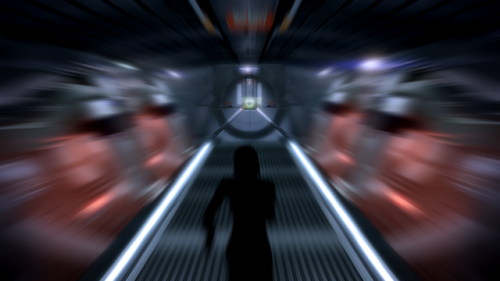
P R I O R I T I E S


Street markets in Japan to romantic dinners in Russia :’)
-
 viridiansworld liked this · 1 year ago
viridiansworld liked this · 1 year ago -
 kahaluada liked this · 1 year ago
kahaluada liked this · 1 year ago -
 garydi liked this · 1 year ago
garydi liked this · 1 year ago -
 d-e-d-r-e-d liked this · 1 year ago
d-e-d-r-e-d liked this · 1 year ago -
 confused-millenial liked this · 1 year ago
confused-millenial liked this · 1 year ago -
 princessoffairytale liked this · 1 year ago
princessoffairytale liked this · 1 year ago -
 spcebun liked this · 2 years ago
spcebun liked this · 2 years ago -
 babydwaekki94 liked this · 2 years ago
babydwaekki94 liked this · 2 years ago -
 wheremydreamsliethereyoullfindme liked this · 2 years ago
wheremydreamsliethereyoullfindme liked this · 2 years ago -
 cursedbeans liked this · 2 years ago
cursedbeans liked this · 2 years ago -
 inuyashamybeloved reblogged this · 2 years ago
inuyashamybeloved reblogged this · 2 years ago -
 deanscarlett reblogged this · 2 years ago
deanscarlett reblogged this · 2 years ago -
 deanscarlett liked this · 2 years ago
deanscarlett liked this · 2 years ago -
 hobojojo72 liked this · 2 years ago
hobojojo72 liked this · 2 years ago -
 maukamakai liked this · 2 years ago
maukamakai liked this · 2 years ago -
 lilygea liked this · 2 years ago
lilygea liked this · 2 years ago -
 dogboy-catboy-and-more reblogged this · 3 years ago
dogboy-catboy-and-more reblogged this · 3 years ago -
 dogboy-catboy-and-more liked this · 3 years ago
dogboy-catboy-and-more liked this · 3 years ago -
 chrispix1 liked this · 3 years ago
chrispix1 liked this · 3 years ago -
 witchvspatriarchy liked this · 3 years ago
witchvspatriarchy liked this · 3 years ago -
 ch3rry15 liked this · 3 years ago
ch3rry15 liked this · 3 years ago -
 glitterrsores liked this · 3 years ago
glitterrsores liked this · 3 years ago -
 christinaatyourservice92 liked this · 3 years ago
christinaatyourservice92 liked this · 3 years ago -
 violationjaebaby-blog liked this · 3 years ago
violationjaebaby-blog liked this · 3 years ago -
 peachsnscreams liked this · 3 years ago
peachsnscreams liked this · 3 years ago -
 speedyduckllamatoad-blog liked this · 3 years ago
speedyduckllamatoad-blog liked this · 3 years ago -
 esplendoranic liked this · 3 years ago
esplendoranic liked this · 3 years ago -
 heygirliesworld liked this · 4 years ago
heygirliesworld liked this · 4 years ago -
 stubbornflood liked this · 4 years ago
stubbornflood liked this · 4 years ago -
 weeb5467 liked this · 4 years ago
weeb5467 liked this · 4 years ago -
 johak liked this · 4 years ago
johak liked this · 4 years ago -
 kawaiichan67 liked this · 4 years ago
kawaiichan67 liked this · 4 years ago -
 bebearkiv liked this · 4 years ago
bebearkiv liked this · 4 years ago -
 didithereaper liked this · 4 years ago
didithereaper liked this · 4 years ago -
 jacksonryness liked this · 4 years ago
jacksonryness liked this · 4 years ago -
 capricornsiren liked this · 4 years ago
capricornsiren liked this · 4 years ago -
 lunnafe liked this · 4 years ago
lunnafe liked this · 4 years ago -
 tenshibeth1 liked this · 4 years ago
tenshibeth1 liked this · 4 years ago -
 aldebaranthelittleowl liked this · 4 years ago
aldebaranthelittleowl liked this · 4 years ago -
 angeliken liked this · 4 years ago
angeliken liked this · 4 years ago -
 valiantsuitcasewagonwinner reblogged this · 5 years ago
valiantsuitcasewagonwinner reblogged this · 5 years ago -
 valiantsuitcasewagonwinner liked this · 5 years ago
valiantsuitcasewagonwinner liked this · 5 years ago -
 simsimma-art reblogged this · 5 years ago
simsimma-art reblogged this · 5 years ago -
 girlwithluvforbts liked this · 5 years ago
girlwithluvforbts liked this · 5 years ago -
 alien-princesscx liked this · 5 years ago
alien-princesscx liked this · 5 years ago -
 cornyfanfiction liked this · 5 years ago
cornyfanfiction liked this · 5 years ago -
 lovelylaura27 liked this · 5 years ago
lovelylaura27 liked this · 5 years ago -
 loveyou-luhan liked this · 5 years ago
loveyou-luhan liked this · 5 years ago